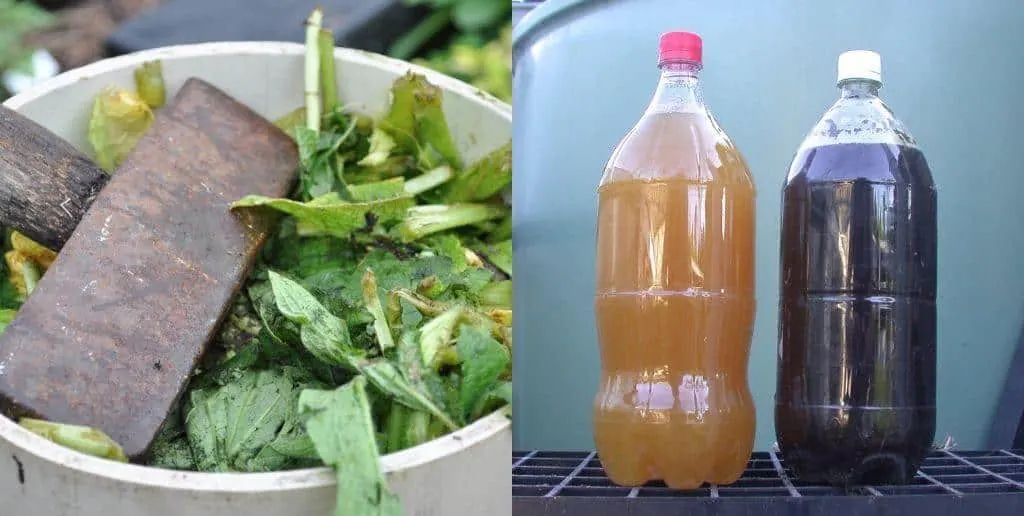
Right Image Credit: graibeard @ Flickr
Comfrey is one of the most useful plants that you can grow in an organic garden.
In this article, we will discuss why growing comfrey is a good idea and then discuss how to make comfrey liquid feed to fertilize your plants.
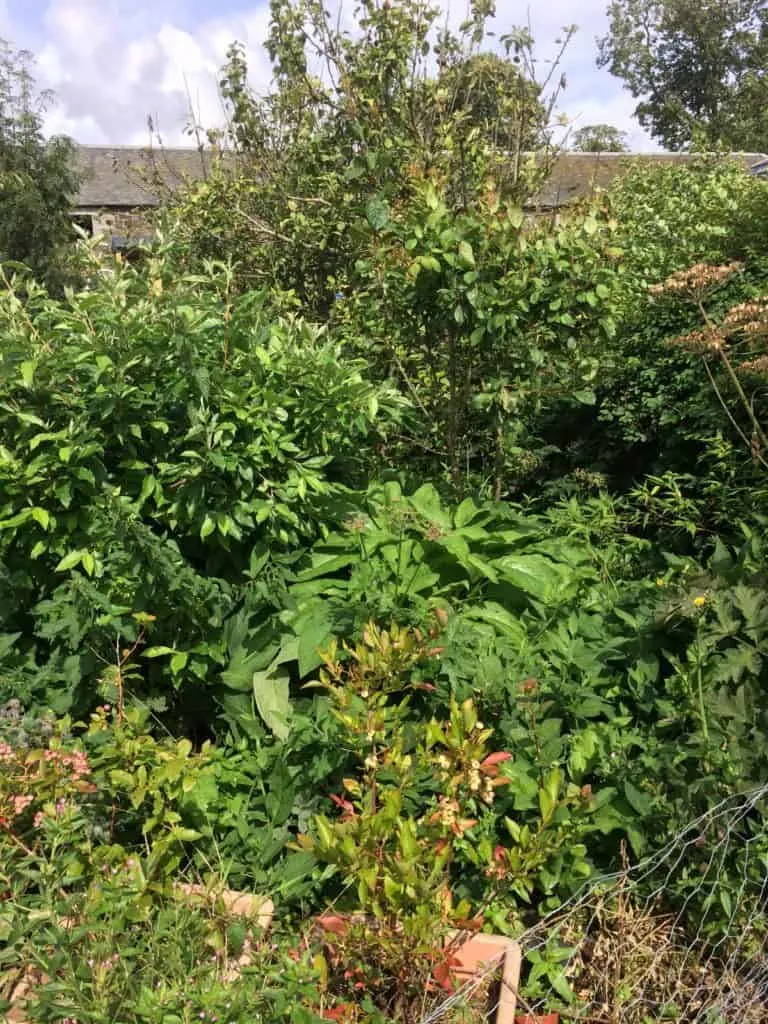
I grow plenty of it around my forest garden, where it helps in numerous ways – from maintaining soil fertility to attracting beneficial wildlife.
I also take comfrey from the areas where it grows and use it elsewhere on my property – as a mulch, to feed the chickens, and as an ingredient for a liquid feed.
Comfrey leaves contain a good mixture of nitrogen, potassium and phosphorus, which are essential for good plant health. It also contains many trace elements required by plants.
Comfrey leaves decomposed in water make a liquid feed comparable in nutrition to commercial feeds.
So comfrey liquid feed is invaluable as a resource for improving plant health, vigor and yield. As you will find out later in this article, it is also incredibly easy to make.
Why Grow Comfrey?
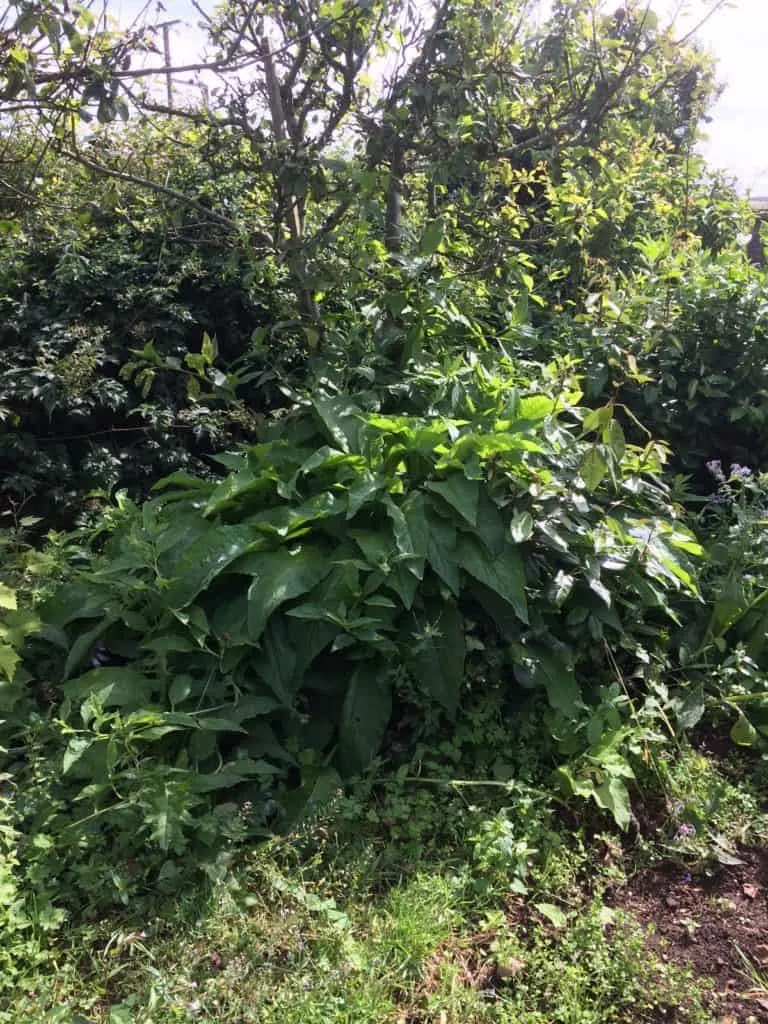
Comfrey is a dynamic accumulator with very deep roots, which will draw up nutrients from deep in the soil.
Those nutrients can be returned to your growing areas by simply chopping and dropping the comfrey where it grows.
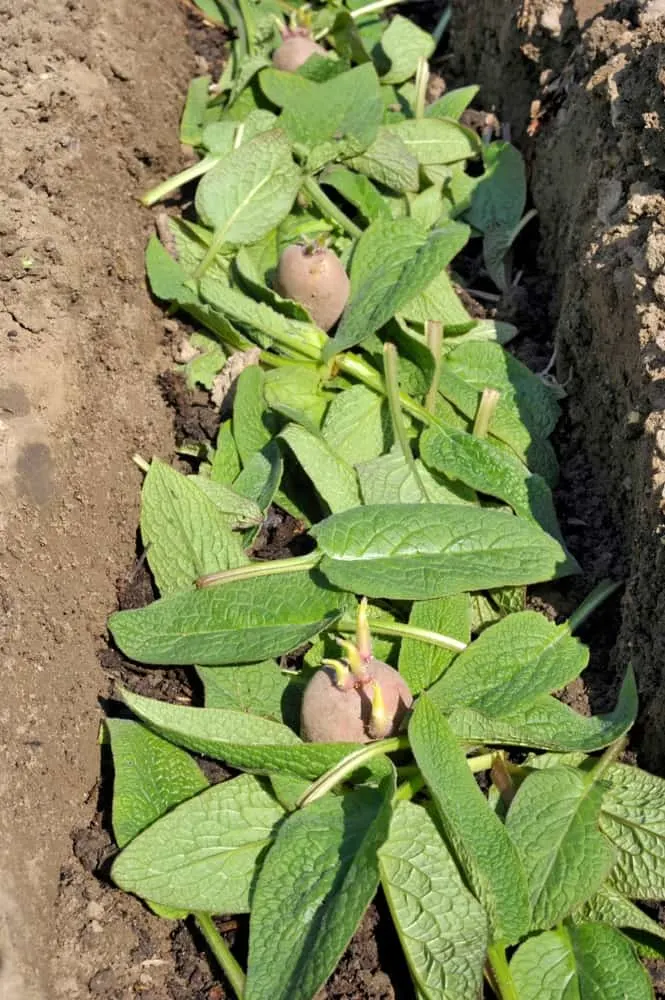
However, you can also consider transferring nutrients to other growing areas by using it as a mulch around your crops, or by turning it into a liquid fertilizer, as you will learn how to do in this article.
Another benefit of comfrey is that it is relatively quick growing, and can generate a large quantity of organic matter in a short period of time. This can be beneficial for soil regeneration or improvement.
Mulching with comfrey can add organic matter and not only add fertility but also improve soil structure.
Comfrey is also a great bee-friendly plant. It’s attractive flowers are beloved by bees and other pollinators and so including comfrey in your planting scheme can help to attract these important garden helpers to your growing areas.
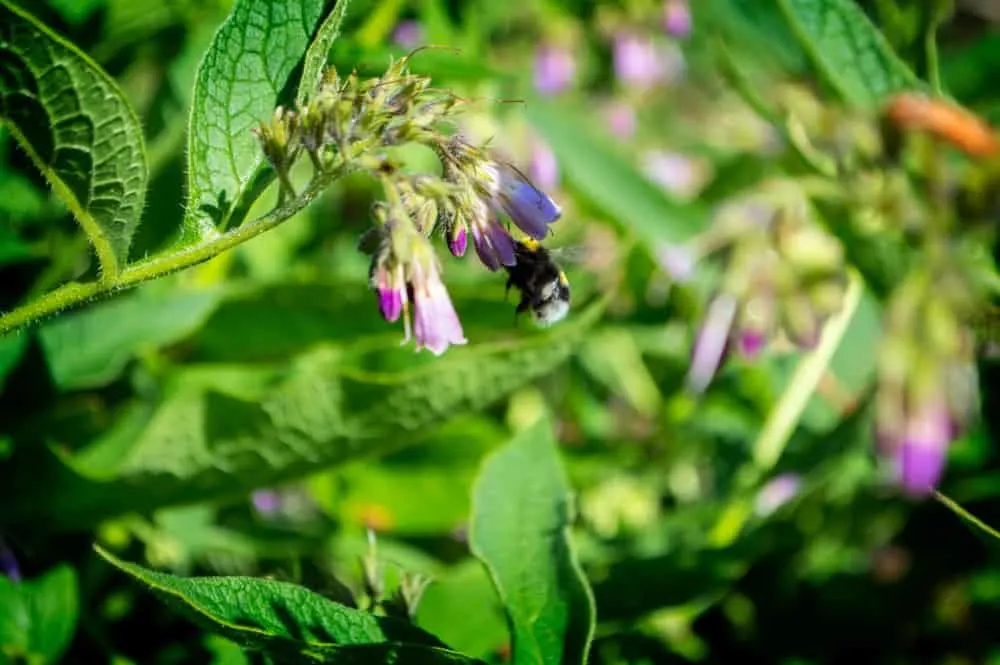
It is also worth bearing in mind that some of the comfrey that you grow could also be used to feed chickens as a supplemental forage or feed, and other livestock may also benefit from the addition to comfrey to their diets.
Interestingly, comfrey also has benefits for human health, and is sometimes used in herbal medicine.
Growing Comfrey
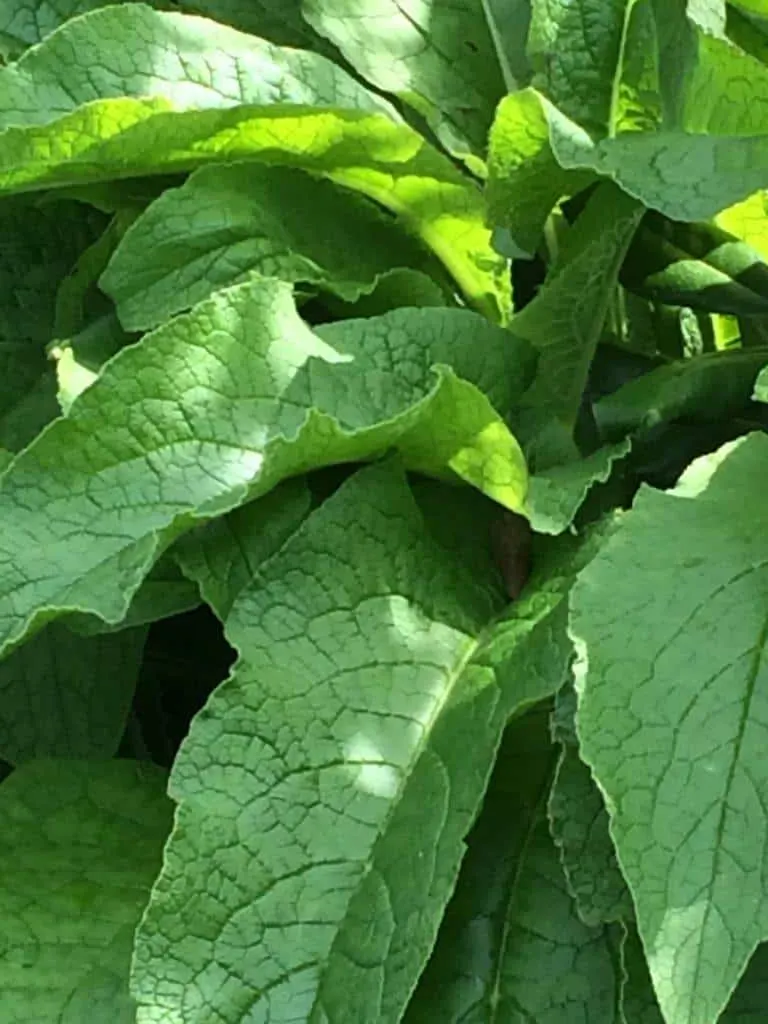
The process of making comfrey liquid fertilizer begins with growing the comfrey you will require in the first place.
It is important to choose the right varietal, and to choose your planting locations carefully, as once it has established itself in a certain spot, its deep roots mean that it is almost impossible to remove.
By choosing a strain that will not propagate by seed, such as Bocking 14, you can ensure that the comfrey will not spread from wherever you place it, so you can enjoy the benefits without worrying that this deep-rooted plant will begin to take over.
Comfrey is usually sold as root pieces or crown offsets. The root offsets should be around 2.5 cm in diameter and though they take a little longer to develop than the crown offsets they should create equally productive plants.
The great news is that you do not need to buy more than a few plants, even for a large garden, as once your plants are established, you will easily be able to propagate more plants by dividing the original ones and using crown offsets and root offsets to make more comfrey plants.
You can purchase established and rooted Bocking 14 comfrey from this page on Amazon so you can quickly establish a healthy comfrey plant in your garden.
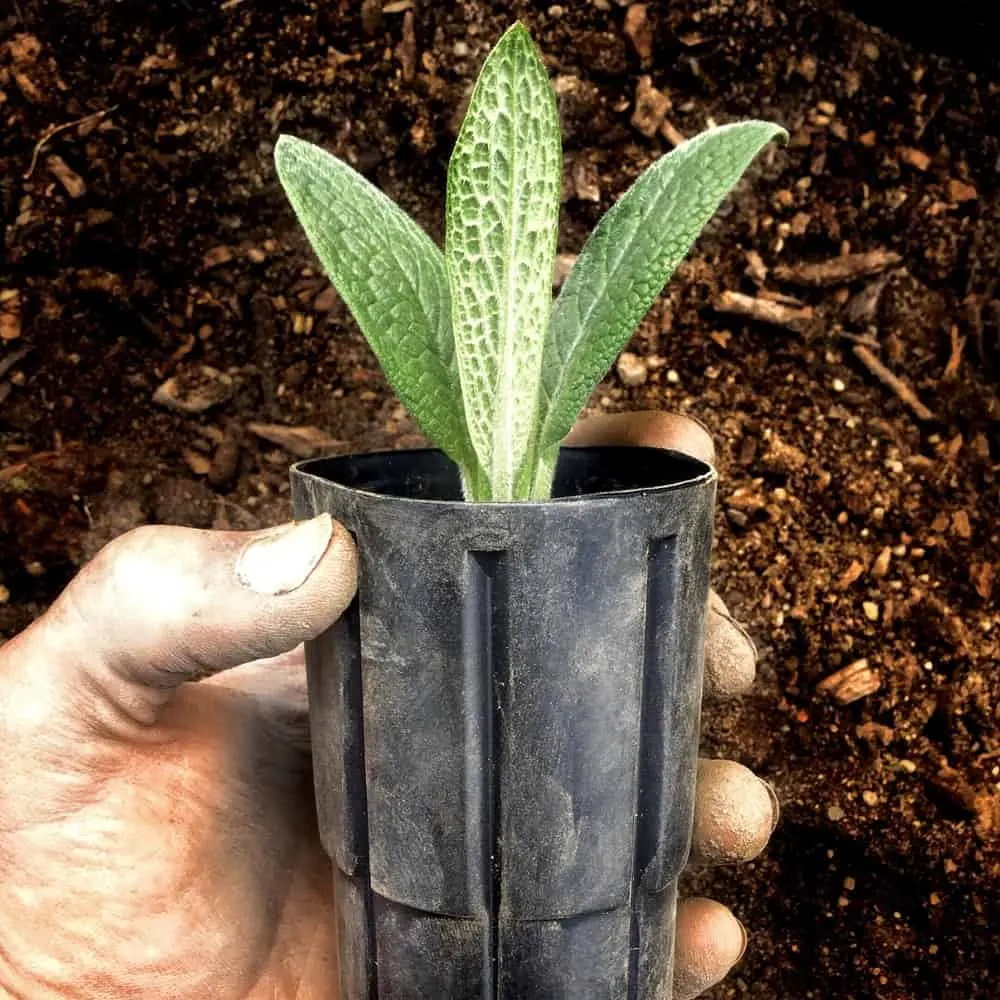
Comfrey is tolerant of very wet conditions and shade and can therefore be grown in a place not suitable for many other plants. It can also be a great option in forest gardens or fruit tree guilds, or in mixed polyculture beds of perennial plants.
Harvesting Comfrey for Liquid Fertilizer
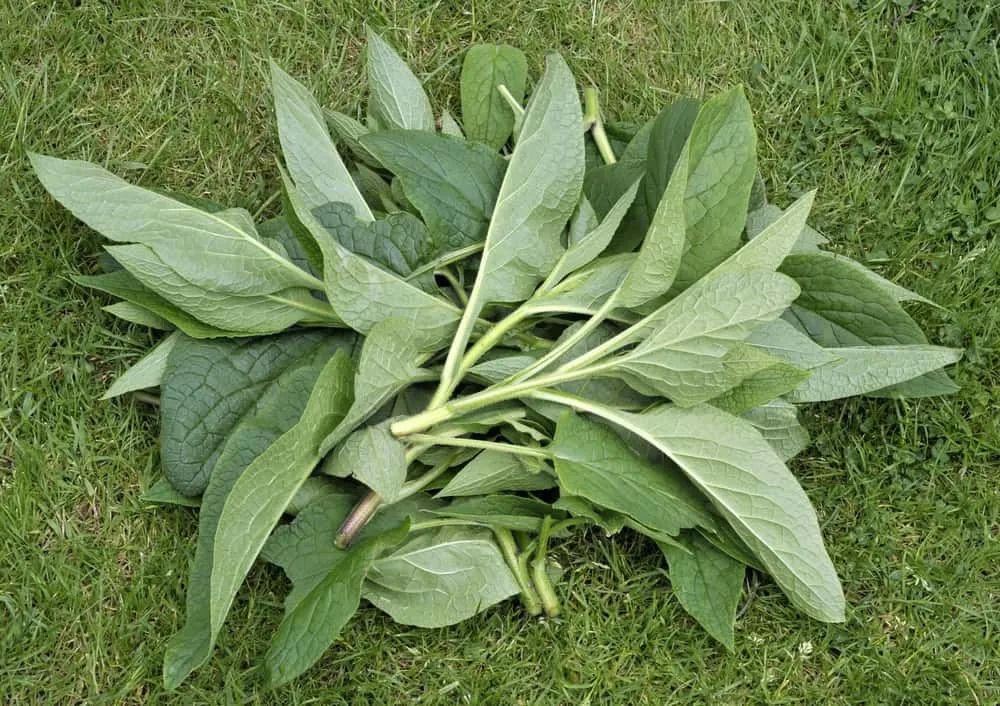
Comfrey can generally be harvested twice over the summer months.
After you cut down the plants to the base, they will regrow and provide a second yield. I generally cut comfrey for a mulch in late June/ early July, and again in August to make my liquid feed.
Though you could consider using a mower to harvest a larger comfrey patch, comfrey that is in between other plants is usually best harvested by hand.
You will need a sharp pair of secateurs, and a pair of gloves to protect your hands from the slightly prickly stems. Some people have no problem handling comfrey, though others have problems with sensitive skin.
To make your liquid fertilizer, you will use the whole of the above-ground portion of the plants – the stems, leaves and flowers.
I generally harvest most of each plant, leaving just a few stems and flowers for the bees and other wildlife.
Making Comfrey Liquid Fertilizer
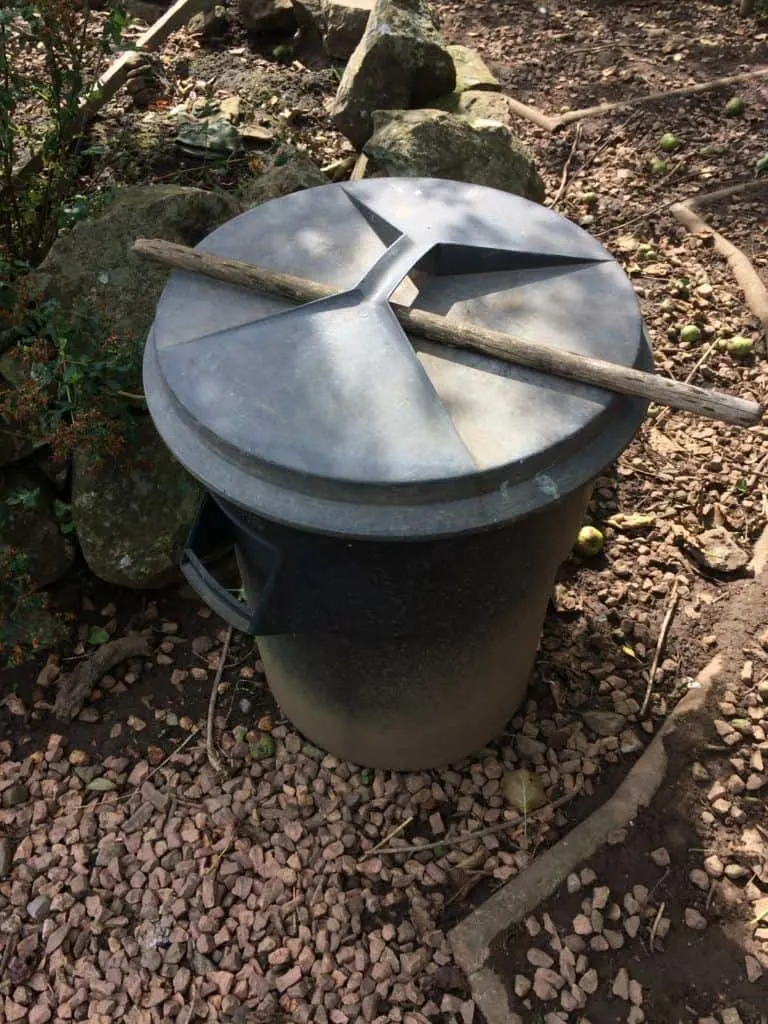
First, harvest your comfrey.
Choose a large bucket, bin or other receptacle (a 55 gallon barrel or drum would be perfect for a large batch, or a five gallon bucket for a small batch) with a lid in which to make your liquid feed. It can be helpful if the receptacle has a spigot at the base, so you can easily drain out the resultant fluid.
Put the comfrey into your receptacle, pushing down the foliage so as to cram in as much as possible. The smaller you chop the pieces, the more quickly they will break down in the water.
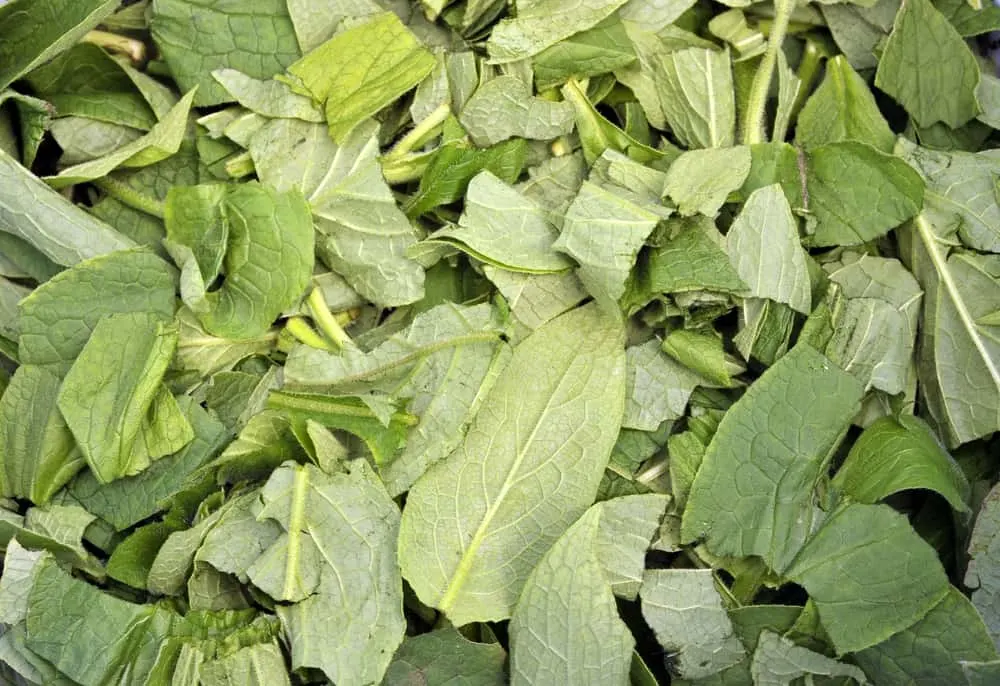
Cover the comfrey with water, and place something on top to keep the plant matter below the water.
Place the lid on the receptacle. (This is an important step. As you will discover, comfrey liquid feed, or comfrey tea as it is sometimes called, is a stinky brew. It reeks to high heaven once the decomposition process begins. For this reason, you should also make sure that you are not making your comfrey tea too close to a seating area or to your home.)
Leave the comfrey to decompose in the water. The comfrey will break down and rot and the liquid that results should be ready to use from around four-six weeks time.
Once your comfrey has rotted down, dilute the mix with water, at a ratio of 10:1. (ten parts water to one part of this liquid.) This will create a mix that is not too strong. Using a stronger mix can result in damage to plants.
Using Comfrey Liquid Fertilizer
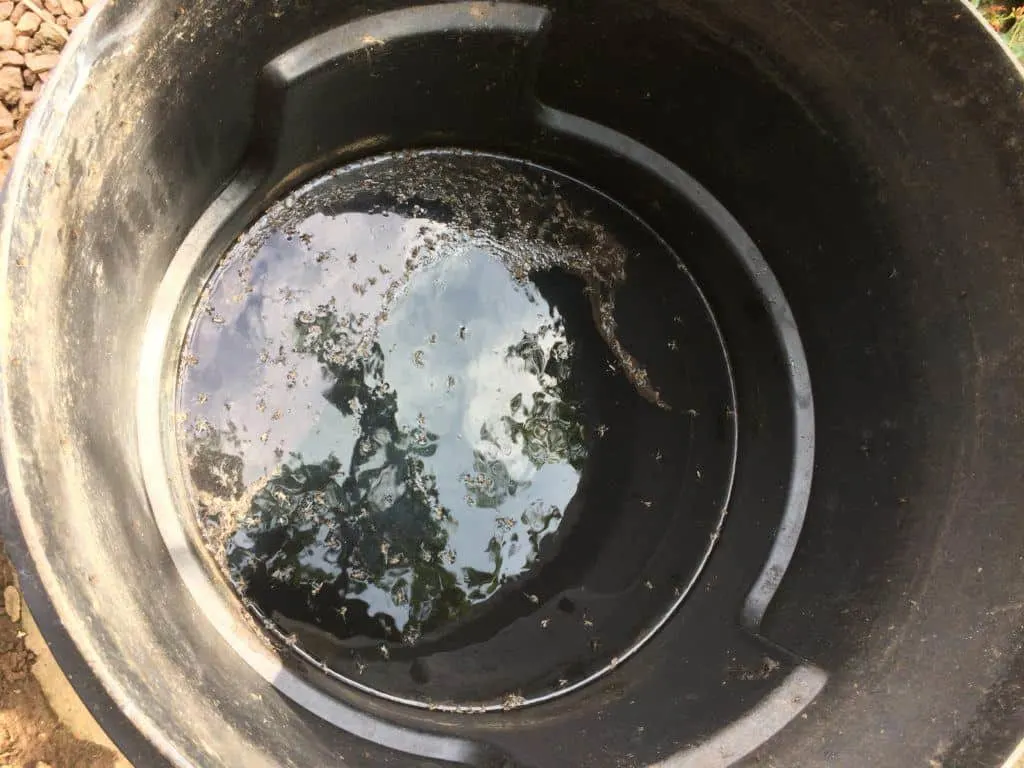
I usually use some of my comfrey liquid feed as soon as it is ready, to provide a boost to fruiting tomato plants and other fruiting crops in my polytunnel.
Add some of the liquid to a watering can, filling it to around a third full, then top up the can with water. I then simply use this to water the plants.
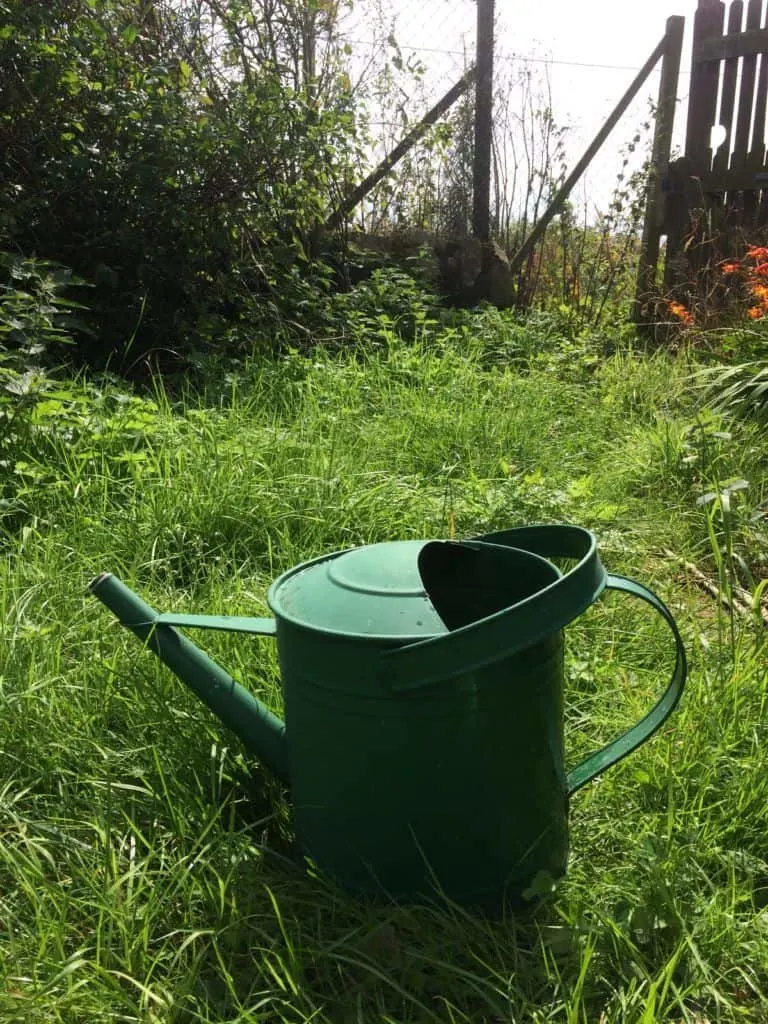
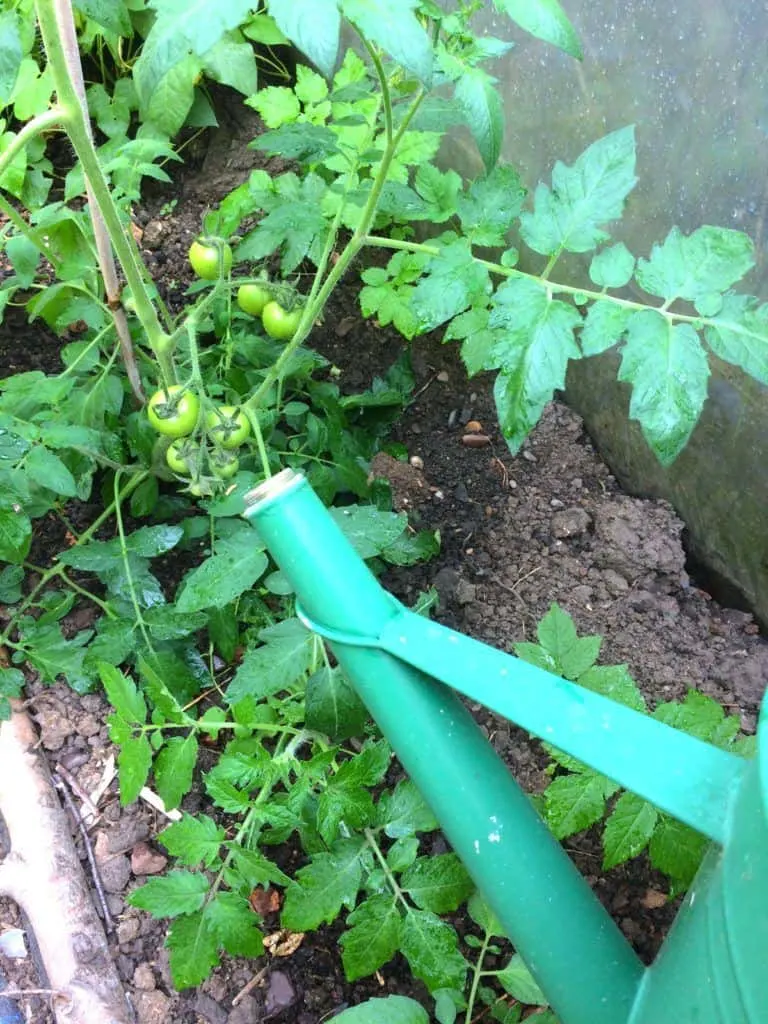
You can also spray this solution onto your plants as a foliar feed.
It can give plants a boost during their early development, when they are transplanted into their final growing positions, and when flowers and fruit begin to form.
Comfrey feed is rich in potassium, which plays an important role through a plant’s life-cycle, in a number of processes including water transportation. Potassium is especially crucial in the growth and reproduction stages.
Storing Comfrey Liquid Fertilizer
Undiluted comfrey liquid feed can also be stored for later use.
I usually leave some of the liquid in the receptacle in which it was made until spring. You could also consider storing comfrey liquid fertilizer in jars, bottles or other containers in a cool, dark place, so that it will be on hand and can easily be used to maintain fertility and boost plant health throughout the year.
Comfrey liquid feed is one of the easiest liquid fertilizers that you can make yourself at home, and use to maintain and improve your organic garden.
So why not grow some comfrey where you live, and use it to make comfrey liquid feed to fertilize your plants?
Pin This To Save For Later

Read Next: My Homemade Tomato Fertilizer Recipes Perfected Over 30+ Years

Get the famous Rural Sprout newsletter delivered to your inbox.
Including Sunday musings from our editor, Tracey, as well as “What’s Up Wednesday” our roundup of what’s in season and new article updates and alerts.


